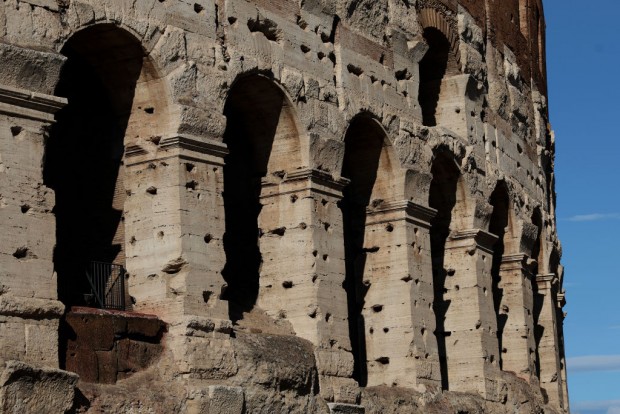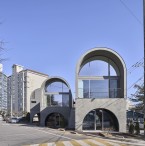
Ancient buildings were made of concrete that can mend its own cracks.
People ponder whether old concrete, which can patch its own flaws, can still be used for current construction as long as ancient buildings continue to stand.
A material that can be utilized in modern buildings in a much more sustainable manner might be feasible to produce, according to Carlos Rodriguez-Navarro, a cultural heritage researcher at Spain's University of Granada, by refining the qualities of the material using traditional recipes from past civilizations.
Chunky Ancient Roman Concrete That Heals Itself
Researchers have sought inspiration from ancient Romans who crafted enduring concrete structures around 200 BCE. Notably, Roman concrete, composed of volcanic ash, lime, and aggregates, has withstood centuries, even in corrosive harbor environments. Unlike modern concrete reliant on Portland cement, Romans used burnt limestone, volcanic sand, and water to trigger chemical reactions and binding materials.
Intriguingly, scientists are uncovering the secret behind Roman concrete's longevity, which is its unique self-mending capacity. While the precise mechanism remains elusive, ongoing research offers promising insights into this remarkable ancient material's endurance, along with its possible modern-day applications.
In a recent study, MIT engineer Admir Masic suggested that the remarkable longevity of Roman concrete arises from unevenly distributed lime chunks, challenging previous assumptions about mixing techniques. Analysis of concrete samples from Privernum, an ancient city near Rome, revealed that these lime chunks play a crucial role in the material's self-healing properties. When cracks form, water penetrates the concrete, activating residual lime pockets and initiating new chemical reactions to repair the damage.
On the other hand, geologist Marie Jackson from the University of Utah believes that the specific volcanic materials used by the Romans contributed to their concrete's durability. They incorporated volcanic rocks from eruptions into their concrete, which naturally reacts and evolves over time, sealing cracks as they develop. Jackson emphasizes that the concrete's ability to adapt and sustain itself is a testament to its ingenious design.
Also Read: New Concrete Floor Slabs, Gothic Construction Techniques Inspired ETH Zurich
Ancient Innovation, Modern Application
A modern constructor cannot simply replicate an antique recipe. Roman concrete was durable, but it wasn't strong enough to support large loads. Oleson asserted that Roman concrete cannot be used to construct a modern skyscraper. As soon as the third level was constructed, it would fall.
Instead, scientists are attempting to incorporate some of the unique qualities of the ancient substance into contemporary mixtures. Masic is a member of a startup that seeks to construct brand-new structures out of concrete that is "self-healing" in the manner of the Romans. To assist in safeguarding coastlines from sea level rise, Jackson is collaborating with the Army Corps of Engineers to create concrete buildings that can withstand seawater well, similar to those in Roman ports.
Masic asserted that in order to make an impression, something need not last as long as it did under the Romans. In the long term, less demolition, less upkeep, and less material will be needed if concrete's lifespan can be extended by 50 or 100 years.
Related Article: Anako Architecture Designs Swiss Home Resembling Concrete Fortress

















